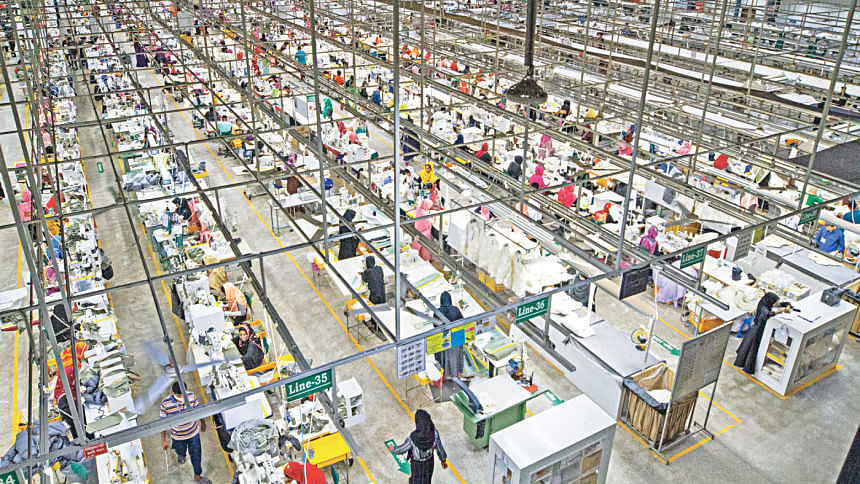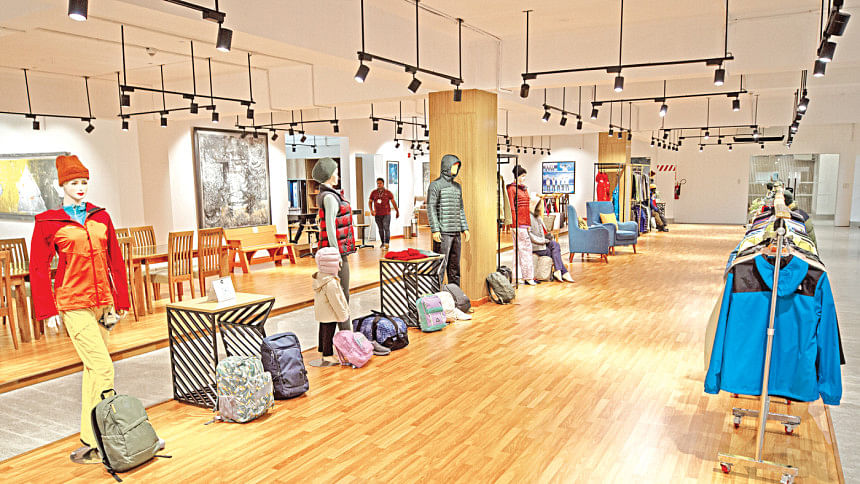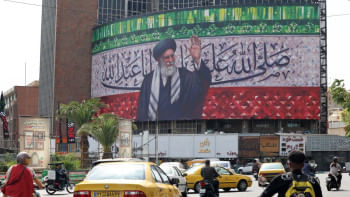Chattogram’s garment factories fear fallout from US tariffs

Owners of Chattogram-based readymade garment factories, many of which do business with buyers in the United States, are worried about a US tariff hike to 35 percent set to take effect on August 1.
They, however, are still hopeful that the Bangladesh government will be able to negotiate a reduction. Otherwise, the future is bleak, they said.
Though the country's RMG sector commenced its journey from Chattogram in early 80s, the number of factories in the port city has dropped in the past decade, with many either shutting down or shifting to Dhaka or elsewhere.
Currently, over 300 factories remain operational in Chattogram.
Around 200 factories take orders directly from buyers or brands, and the others work under subcontracts, according to the Bangladesh Garment Manufacturers and Exporters Association (BGMEA), Bangladesh Knitwear Manufacturers and Exporters Association (BKMEA), and export processing zones (EPZs).

It is difficult to find accurate data regarding the export volume of the factories in Chattogram. Market insiders opine it is over 9 percent of the total exports.
Apparel export from Bangladesh reached $39.34 billion in the just-concluded fiscal year of 2024-25, data from the Export Promotion Bureau and BGMEA shows.
This was 81.49 percent of the country's total export earnings worth $48.28 billion in the year.
And Bangladesh's garment exports to the US accounted for over 19 percent of total apparel exports.
Market insiders said most of the factories in Chattogram are engaged in business with US buyers.
Asian Apparels Group has 18 readymade garment factories in Chattogram, and 95 percent of its exports are destined for the US market. In 2024, the group's exports to the US market amounted to $300 million.
Deputy Managing Director Sakeef Ahmed Salam opines that Chattogram-based garment factories are more engaged in business with US buyers compared to those in Dhaka.
He said US buyers have already asked them to bear a good portion of the extra tariff on work orders currently under negotiation.
Moreover, many US buyers are not releasing purchase orders for products informed of earlier, the production of which could have started in July or August, as they opted to wait for the final tariff rate, he said.
In the absence of purchase orders, they are not able to start purchasing the required accessories and raw materials, he said.
BGMEA Director SM Abu Tayyab said most of the garment factories in Chattogram are dependent on the US market, and the trade has been running for long.
Last year, Tayyab's factory, Independent Apparels Ltd, exported around $60 million worth of sportswear and kidswear, and 90 percent of it was destined for the US market.
"Even if the US imposes a 30 percent tariff instead of 35 percent, a good number of these factories would not survive," he said.
If the US tariff can be lowered to that for Vietnam, meaning 20 percent, only then will Bangladeshi factories be able to compete, said Tayyab.
"Otherwise, US buyers would shift their orders to Vietnam and even to India, as the sector in the neighbouring country has been developing over the last 10 years," he said.
He underscored the need for reducing the tariff through bilateral talks this week.
Most of the 60 RMG factories located inside Chattogram Export Processing Zone (CEPZ) are more or less dependent on the US market.
Syed M Tanvir, managing director of leading denim exporter Pacific Jeans Group, which has eight factories in the CEPZ, said the factories would surely face an immediate impact.
Bangladeshi garment products would become 35 percent more expensive compared to current rates, he said.
He, however, prefers to wait a bit longer to assess the overall impact until the tariff figures are fixed for other competitive sources like India, Pakistan, Egypt, and Jordan.
Tanvir stressed the need for strategies for the factories to individually deal with their customers and face the challenges in the coming days.

 For all latest news, follow The Daily Star's Google News channel.
For all latest news, follow The Daily Star's Google News channel. 



Comments